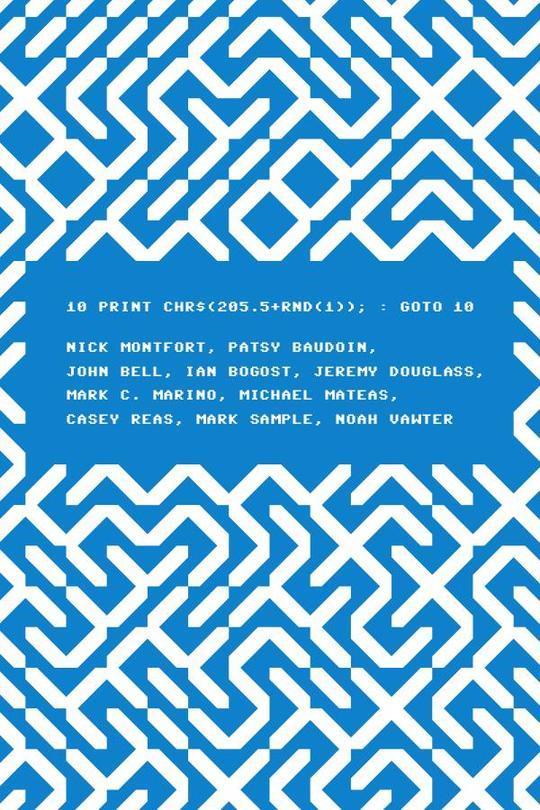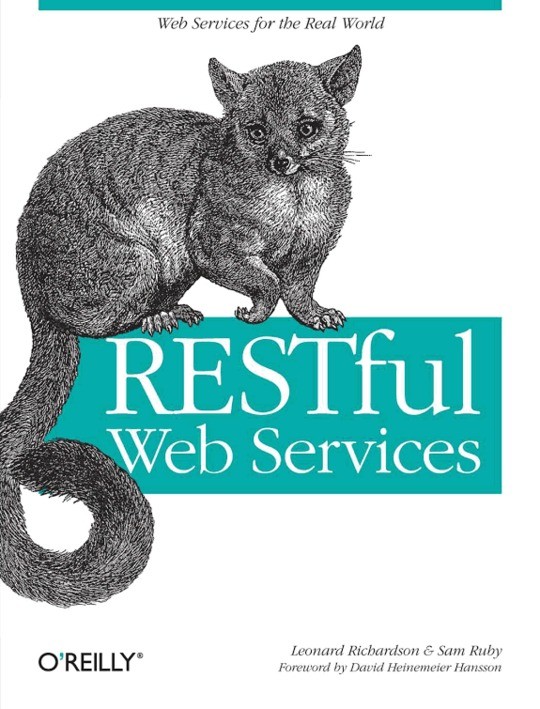
The Future Internet
Free
Description
Contents
Reviews
Language
English
ISBN
978-3-642-38081-5
Preface
Table of Contents
Software Driven Networks, Virtualisation,
Programmability and Autonomic Management
Towards a Socially-Aware Management of New Overlay Application Traffic Combined with Energy Efficiency
in the Internet (SmartenIT)
1 Introduction
2 Current Trends in the Internet
3 Challenges Emerging from Internet Trends
4 Use Cases and Solution Approaches
5 Requirements for System Design and Architecture Design
6 Summary and Preliminary Conclusions
References
The NEBULA Future Internet Architecture
1 Introduction
2 NEBULA as a Network Architecture
2.1 Today’s Internet
2.2 NEBULA
3 NEBULA Future Internet Architecture Integration
4 NEBULA Configuration and Operation
4.1 Policy Configuration
4.2 Path Setup
4.3 Forwarding
4.4 Naming
5 Conclusions
References
Open the Way to Future Networks – A Viewpoint
Framework from ITU-T*
1 Introduction and Context
2 Future Network Standardization in ITU-T
2.1 Service Awareness
2.2 Data Awareness
2.3 Environmental Awareness
2.4 Social and Economic Awareness
3 Future Plan
4 Related Research and Standardization and Programs
5 Concluding Remarks
References
Towards a Minimal Core
for Information-Centric Networking
1 Introduction
1.1 Advantages of a Minimal Core
1.2 Design Goals for the Core
2 Information-Centrism
3 Naming and Content Security
4 Information Space
4.1 Definition
4.2 Discussion
5 An Example Node Architecture
6 Development on Top of the Core
6.1 Managing Consistency with Scopes
7 Conclusion
References
Managing QoS for Future Internet Applications
over Virtual Sensor Networks
1 Introduction
2 The VITRO Routing Solution
3 Applications Exploiting Virtualization of WSNs
3.1 Simulation Environment
3.2 Energy Control in Public and Private Buildings
3.3 Traffic Control Application Domain
3.4 Logistics Applications
3.5 Security-Related Applications
4 Conclusions
References
High Availability in the Future Internet
1 Introduction
2 Related Work and Background
3 Providing Fast Protection with LFAs
4 Analyzing and Improving LFA-Based Fast Protection
5 Improving Fast Protection with Remote LFA
6 Conclusions and Future Work
References
Integrating OpenFlow in IMS Networks and Enablingfor Future Internet Researchand Experimentation
1 Introduction
2 Introducing SDN to IMS: Integrating OpenFlow
3 Enhancements and Implementation on IMS Testbeds
3.1 The UoP OSIMS Testbed
3.2 The TSSG Testbed
4 Enabling for Experimentation
4.1 Integration with other Control and Monitoring Frameworks
5 Target Experiments/Experimenters
5.1 QoS with Policy Enforcement and OpenFlow Control
5.2 Prioritizing Traffic between 2 IMS Cores Exchanging Data
6 Conclusions and Future Work
References
Computing and Networking Clouds
Contrail: Distributed Application Deployment
under SLA in Federated Heterogeneous Clouds
1 Introduction
2 Contrail Architecture
3 Federation Concept and Service
4 Service Level Agreements
5 Virtual Execution Platform
6 Conclusion
References
Cloud–Based Evaluation Framework
for Big Data
1 Introduction
2 Challenges in Benchmarking on Big Data
3 VISCERAL Framework
3.1 Cloud-Based Framework
3.2 Benchmark Activity Flow
3.3 Manual Annotation
4 Discussion and Conclusion
References
Optimizing Service Ecosystems in the Cloud
1 Introduction
2 Overview of Optimization Models
2.1 SOA4All Optimizer
2.2 DAEM Optimizer
3 Experimental Design
4 Experimental Results
4.1 Soa4all Is Faster on a Single Site, Whereas DAEM is Faster in a Multi-site Configuration
4.2 Soa4all Is More Sca alable than DAEM
4.3 DAEM’s Output s Is More Stable and Resilient to Changes than SOA4Al lls
4.4 BonFIRE Support for Future Internet Scenarios
5 Discussion about Related Work
6 Conclusion
References
Resource Optimisation in IoT Cloud Systems by Using
Matchmaking and Self-management Principles
1 Introduction
2 Matchmaking for IoT Cloud Systems and Services
3 Cloud Computing and IoT Services
4 IoT Data Cloud Challenges and Limitations
5 IoT Cloud Service Matchmaking Evaluation
6 Linked Data and Scalable Cloud Management
7 Matchmaking and IoT Cloud Service Control
8 Conclusions and Future Work
References
Towards a Secure Network Virtualization
Architecture for the Future Internet
1 Introduction
2 Current Architecture Proposals
3 Analysis of Capabilities
4 Global Virtualization Architecture
4.1 GVA Features
4.2 Functional Blocks
5 Initial Viability Analysis
6 Conclusions and Future Work
References
Seeding the Cloud: An Innovative Approach
to Grow Trust in Cloud Based Infrastructures
1 Introduction
2 Seed4C Approach: The NoSE as a Minimal Trusted Computing Base for the Cloud
3 Examples of Addressed Use-Cases
3.1 High Performance Computing
3.2 Privacy Policy Enforcement
4 Conclusion
References
Internet of Things
IoT6 – Moving to an IPv6-Based Future IoT
1 Introduction
2 IPv6 Capabilities for the Internet of Things
3 IPv6 Worldwide Deployment
4 IoT6 Architectural Model
5 Resources Repo ository and Service Discovery
6 Building Autom mation Components Integration
7 Conclusion
References
SmartSantander: Internet of Things Research
and Innovation through Citizen Participation
1 Introduction
2 Novel Architecture for Service Provision and Experimentation
3 Service Provisio on and Experimentation: Augmented Reality y and Participator ry Sensing
3.1 Augmented y Reality Service
3.2 Participatory Sensi ing Service
3.3 Service Component t Implementation
4 Conclusions
References
A Cognitive Management Framework
for Empowering the Internet of Things
1 Introduction
2 Related Work and Paper Contribution
3 Cognitive Management Framework for IoT
3.1 Virtual Objects Level
3.2 Composite Virtual Objects Level
3.3 User/Stakeholder and Service Level
4 Framework Implementation
4.1 Operation
4.2 Ambient Assisted Living Example
5 Conclusion
References
Building Modular Middlewares
for the Internet of Things with OSGi
1 Introduction
2 Middlewares for the Internet of Things
3 Selected Mechanisms of OSGi
3.1 Modularity
3.2 Runtime Configurations
3.3 Configurations of Bundles
3.4 Console
3.5 Event-Based Communication
3.6 Local Services
3.7 Web Services
4 Motivations and Requirements for an OSGi-Based Middleware
4.1 Modularity
4.2 Service-Oriented Architecture
4.3 Communication with Devices
5 Architecture of the Middleware
5.1 The Device Layer
5.2 The Business Logic Layer
5.3 The Interface Layer
6 Management of the Middleware
6.1 Lifecycles of Modules
6.2 Runtime Configurations
6.3 Configurations of Modules
7 Example Implementation of the Middleware
8 Conclusions and Future Works
References
Towards an Architecture for Future Internet
Applications
1 Introduction
2 Device Independent Architecture
2.1 Device Independence
2.2 Multi-device Support
2.3 The Architecture
3 Future Directions
References
ComVantage: Mobile Enterprise Collaboration Reference Framework and Enablers for Future
Internet Information Interoperability
1 IT Challenges for Collaboration
2 ComVantage Application Areas in a Nutshell
2.1 Mobile Maintenance Scenario
2.2 The Customer-Oriented Production Scenario
3 ComVantage Reference Architecture
4 Security Model for Linked Data Access Control
5 Semantic Data Lifting
5.1 Linked Data Adapter for Databases
5.2 Linked Data Adapter for Real-Time Sensor Data Middleware
6 The ComVantage Modelling Framework
7 Intuitive and Trustful Mobile Collaboration
8 Conclusions
References
Test-Enabled Architecture for IoT
Service Creation and Provisioning
1 Introduction
2 Related Work – IoT-A ARM
3 Requirements
3.1 IoT Requirements
3.2 Requirements for Knowledge-Based Service Lifecycle Management
3.3 Requirements for Test-Driven Service Creation
3.4 Comparison of Reviewed Architectures against Identified Requirements
4 Architecture
4.1 Architecture for IoT Service Creation and Provision
4.2 Reverse Mapping with Respect to IoT-A Domain Model
4.3 Extension against IoT-A Reference Architecture
5 IoT.est Architecture Building Blocks
6 Case Study
7 Conclusions
References
Enabling Technologies and Economic Incentives
Sustainable Wireless Broadband Access
to the Future Internet - The EARTH Project
1 Introduction
2 Socio-Economic Impact Analysis
2.1 Global Carbon Footprint of Mobile Communications
2.2 RAN Energy Consumption and the Potential Impact of EARTH Technologies
3 Energy Efficiency Evaluation Framework (E3F)
3.1 Small-Scale Short-Term System-Level Evaluations
3.2 Power Model
3.3 Traffic Model
3.4 Metrics
3.5 Application of E3F: : Where Is the Energy Saving Potential?
4 Hardware Solutions and Radio Interface Techniques
4.1 Hardware Solutions
4.2 Radio Interface Techniques
5 Network Level Solutions
5.1 Network Deployment Recommendations
5.2 Network and Radio Resource Management
6 Integrated Solut tions
7 Disruptive Appr roaches Beyond Today’s Networks
8 Validation of Re esults
8.1 Validation of Hard dware Concepts by Transceiver Prototypes
8.2 Validation of Netwo ork Level Solutions in an Operator Test Plant
9 Summary and Conclusion
References
An Internet-Based Architecture Supporting
Ubiquitous Application User Interfaces
1 Introduction
2 Model Based User Interfaces
3 Multi-Device Adaptive User Interfaces
3.1 The Webinos Platform
3.2 Adaptive User Interface Framework
4 Case Study: Adaptive Navigation Bar
5 Conclusion
References
Cooperative Strategies for Power Saving
in Multi-standard Wireless Devices
1 Introduction
2 C2POWERScenarios
2.1 Scenario 1: SR Relaying in Homogeneous RATs
2.2 Scenario 2: VHO in Heterogeneous RATs
2.3 Scenario 3: SR Relaying and VHO in Heterogeneous RATs
3 Context-Aware Architecture
4 Power Saving Strategies
4.1 Coalitional Game Theory
4.2 Coalitional Game Model
4.3 Cooperation Enforcement
5 Results and Discussion
6 Conclusion
References
Counting the Cost of FIRE:
Overcoming Barriers to Sustainable Experimentation Facilities
Overcoming Barriers to Sustainable Experimentation Facilities
1 Introduction
2 A Value Proposition for a Cloud Experimentation Facility
3 Cost Modelling and Accounting
4 Operational Performance Management
5 Future Work
6 Conclusions
References
User Involvement in Future Internet Projects
1 Introduction
2 Methodology
3 User Involvement in General
4 User Involvement in Future Internet Projects
5 Conclusions
References
Design and Implementation of Cooperative Network Connectivity Proxy Using Universal
Plug and Play
1 Introduction
2 Related Work
3 Overview of UPnP
4 Network Connectivity Proxy
4.1 Overview of NCP
4.2 NCP Types
5 Design of Cooperative Network Connectivity Proxy
6 Implementation of the NCP
7 Measurements and Observations
8 Conclusions
References
Book Sponsoring Projects Overview
3DLife - Bringing the Media Internet to Life
1 Summary of Project Objectives and Achievements
References
CONCORD Project Management of the Future Internet
Reference
FLAMINGO NoE Project Management
of the Future Internet
1 Introduction
2 Key Issues and Problems
3 Expected Results
Reference
The GEYSERS Concept and Major Outcomes
1 Introduction
2 Project Outcomes
iCore: A Cognitive Management Framework
for the Internet of Things
1 Key Issues and Objectives
2 Technical Appro oach
3 Expected Impact
Reference
IoT6 Project in a Nutshell
References
Mobile Cloud Networking: Mobile Network, Compute, and Storage as One Service
On-Demand
1 Introduction
2 Main Objectives
3 Technical Approach
4 Key Issues
5 Expected Impact
The SmartenIT STREP Project: Socially-Aware Management of New Overlay Application Traffic Combined with Energy Efficiency in the Internet
1 Main Objectives
2 SmartenIT Requirements and Goals
3 Expected Outcomes
Reference
The SmartSantander Project
1 The Service/Experimentation Duality
2 A Real-Life, Large-Scale Facility
UniverSelf, Realizing Autonomics for Future Networks
1 Four Challenging Objectives
2 An Impactful Experimentation Strategy
3 An Integrated Portfolio
4 The Unified Management Framework (UMF)
5 Summary of Main Achievements
5 Summary of Main Achievements
Author Index
The book hasn't received reviews yet.











